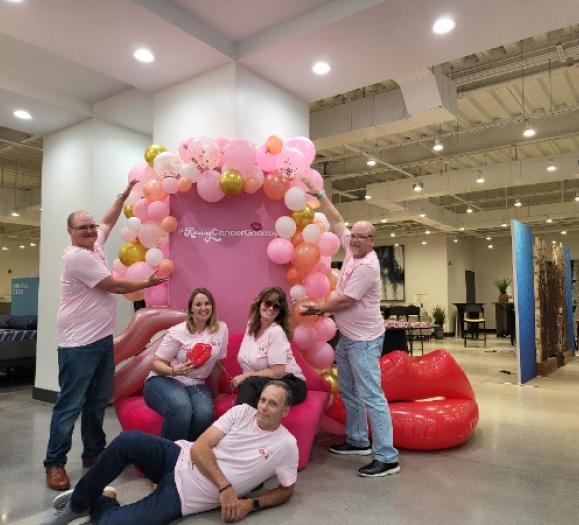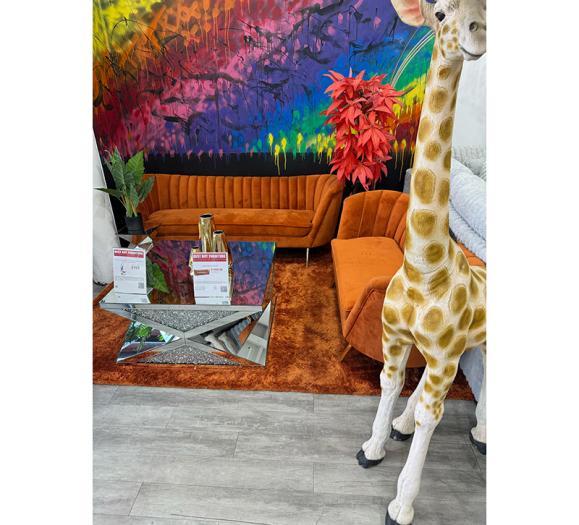In our latest virtual Home Design Business Think Tank, we spoke with experts, retailers and designers about the steps they take to ensure customer/client loyalty and profitability in their businesses. Design coach Gail Doby shared her Creative Value Blueprint, created to teach designers to get paid what they’re worth; and the Retail Doctor Bob Phibbs shared his insights on training staff to get the maximum out of each sale and deliver an exceptional customer experience. We followed up with designers and retailers who have put these expert practices into play and have seen some significant results. For the full Think Tank experience, head on over to the Furniture, Lighting & Decor YouTube channel for the video replays. Thank you to our sponsor for our spring Home Design Business Think Tank, Hooker Furniture. Here are some of the insights we gleaned from the experts.
For Designers
Gail Doby, founder of Gail Doby Coaching & Consulting for Interior Designers, has just released her first book — Business Breakthrough: Your Creative Value Blueprint to Get Paid What You’re Worth. In her new primer/workbook, Doby walks designers through exercises to help them understand how much they do, their financials and raise their rates to complement their efforts. For more on Gail Doby, go to gaildoby.com. Here, we share some of her top insights for your Creative Value Blueprint. To see the full Q&A with Doby: https://bit.ly/2Sq1uZR. We also spoke with designers who have seen profitability expand through working with Doby. Panelists included: Becky Charton, Table Setters Inc.; George Brazil, Sagrera Brazil Design; LeeAnn Baker, LeeAnn Baker Interiors; and Vicky Serany, Southern Studio Interior Design. For their insights, go to: https://bit.ly/3vn5Azf.
Tips From Gail Doby to Earn What You’re Worth
- Designers need to have clarity about what it is they need to do to build a successful and sustainable business. Many of the people who come to us are stuck or they want to take their business to the next level. One of the first places people get stuck is with mindset. As a designer you need to know where you are now and where you want to go so you can figure out the path. We talk about building a team, marketing, and of course, financials.
- Some designers aren’t getting what they’re worth because, honestly, many of them don’t have the confidence to charge what they’re worth. They’re afraid of raising their rates because they’re afraid of losing business. That fear is holding them back and as a designer, the reality is most people are determining their fees based on what everyone else is charging around them. That has no bearing on what it really costs you to make money.
- If you want to make money in your business, you need to understand cost structure, set goals and decide how much you really want to make to determine your pricing.
- You need to understand the cost of running your business so you can be confident in knowing what you need to charge to make a good living, hire a team, and get to a place of financial freedom. You become confident when you have clear numbers and understand what it takes to operate your business. We help people clarify this with what we call a three-year financial blueprint, where we help them map out what their costs are going to be and what it will take to scale their businesses. From there, what do they need to make to meet their bottom line? We use something we call a bottom-up calculator that allows us to figure out what our coaching clients should be charging, what their markups should be and how they should approach their business. Each business is different so there’s no perfect answer.
- You can’t just be a great designer. You also have to be a great business person. That’s a big distinction. The Creative Value Blueprint is your vision, your values, the culture of your business, your pricing and team structure, how you’re organized with systems and processes. How you present to your clients is based on really thinking through and understanding each element and how it fits together.
- To develop a Creative Value Blueprint, you also need to understand your client. We put people through an 85-question questionnaire to understand their business along with an ideal client dossier so we can find out who they really like to serve. When we have that material, we can dive deeper and figure out what they’re trying to build.
- We make it as simple as possible for designers to relate their financials to their personal life so they get it, because 80 percent to 90 percent of what designers do is related to running a business and the other 10 percent to 20 percent is the fun, creative part. Here’s the good news. If you build a company, you can have a team of people working for you. By understanding your financials, there comes a point where you actually have time to breathe, and you’re getting to do more of the creative things you want to do.
For Retailers
Bob Phibbs, the Retail Doctor, runs a retail coaching program, SalesRX, designed to help retailers of all shapes and sizes put the training and processes in place to train sales staff, elevate the customer experience, and learn how to raise revenue by creating a consistent and captivating consumer shopping environment. For more about Bob Phibbs and his coaching programs, visit retaildoc.com and/or salesrx.com. To see the full video Q&A with Bob Phibbs, go to: https://bit.ly/3voJqMT.
We also spoke with retailers Steve Pulone from O’Malia’s Living and Matthew Rowan from Dominion Lighting about how solid training and good retail practices have helped elevate their bottom lines. To hear from these retailers, go to: https://bit.ly/3wogiXn.
Tips From Bob Phibbs For A Better Retail Experience
- If you are running a retail store, you are known by your compromises, not your successes. When you let someone have a bitter attitude on your sales floor or you have an employee who doesn’t return emails and phone calls, those compromises can hurt your business. We’re in the good times right now, but at some point, there will be a “will or skill” issue with your employees that will need to be addressed. That’s where the SalesRX program comes into play.
- Your employees need to build rapport with the customers. A skill issue may be you have a staff member who doesn’t understand how to build that rapport, that you present top down when showing home furnishings products or that you never sell from your own wallet. That salesperson might not pay top dollar for a sofa because of what they make, but that customer might, and they won’t if the option isn’t presented to them.
- The other issue you have to address with staff is the “will” issue. You could have an employee who has the skill but doesn’t want to do the training. Your employees have to be willing to be trained. Sometimes we tell ourselves that one employee is the best only to find out through training that they may not accept changes, and other employees willing to put in the work can outshine them.
- What should you look for in an employee? First, they need to be curious. They need to want to know why the customer walked through the door today. If they’re curious about that then the questions they come up with when engaging that customer will lead them into the right area for a sale. You don’t want your employees being passive and waiting for the customer to come to them. They should ask the customer questions. Never assume that the customer doesn’t have the money to spend; we don’t dress up to go shopping anymore. If you’re not going to enter the dialogue and be curious, if you’ve already decided what’s the easy sale, you’re missing out on what could be a much better sale.
- The profit comes from the second sale. It’s deadly to let somebody sell just one sofa because the profits from that sale were just used to get that customer into your store — through your website, your social media, your marketing. You’ve just paid for all of that with the profit on that one sale. The profit comes from the second sale, and that second sale comes from building a relationship with the customer.
- A lot of times we allow our employees to discount to close the deal. “If you buy today, I’ll give you an extra 10 percent off.” We’re still stuck in that lever of thinking that we can make people do things based on a discount. I’m here to tell you that lever is broken because it’s been tried so often, customers don’t believe your pricing. The value shopper is not there anymore. The value shopper is going to buy it online. If a customer is in your store, they’re looking for what’s best.
- A great salesperson does the follow up after the sale because they know what it’s like to be that customer. They keep them informed. [Especially now with long delivery times, it’s important to keep your customers in the loop.] Give customers an update every two weeks even if you don’t know anything else about the order. People who have money buy furnishings and they know other people who have money to buy furnishings. And they all talk. If you allow the consumer to become disgruntled, they are going to control that dialog in a negative way. On the flip side, if you stay connected to your customer, the conversations should remain positive, even if they are waiting longer than normal for their purchase.
- Instead of “How can I help you?” ask the customer if you can tell them a bit about the store or take them on a short store tour. It personalizes the experience and gives your employee the opportunity to share information about services and categories. Connecting with customers is not about a transaction; it’s about a relationship. You need to get that buy-in from your customer. When you say, “Can I help you find something?” you haven’t really worked for that sale. With training, you can ensure your employees understand that.







